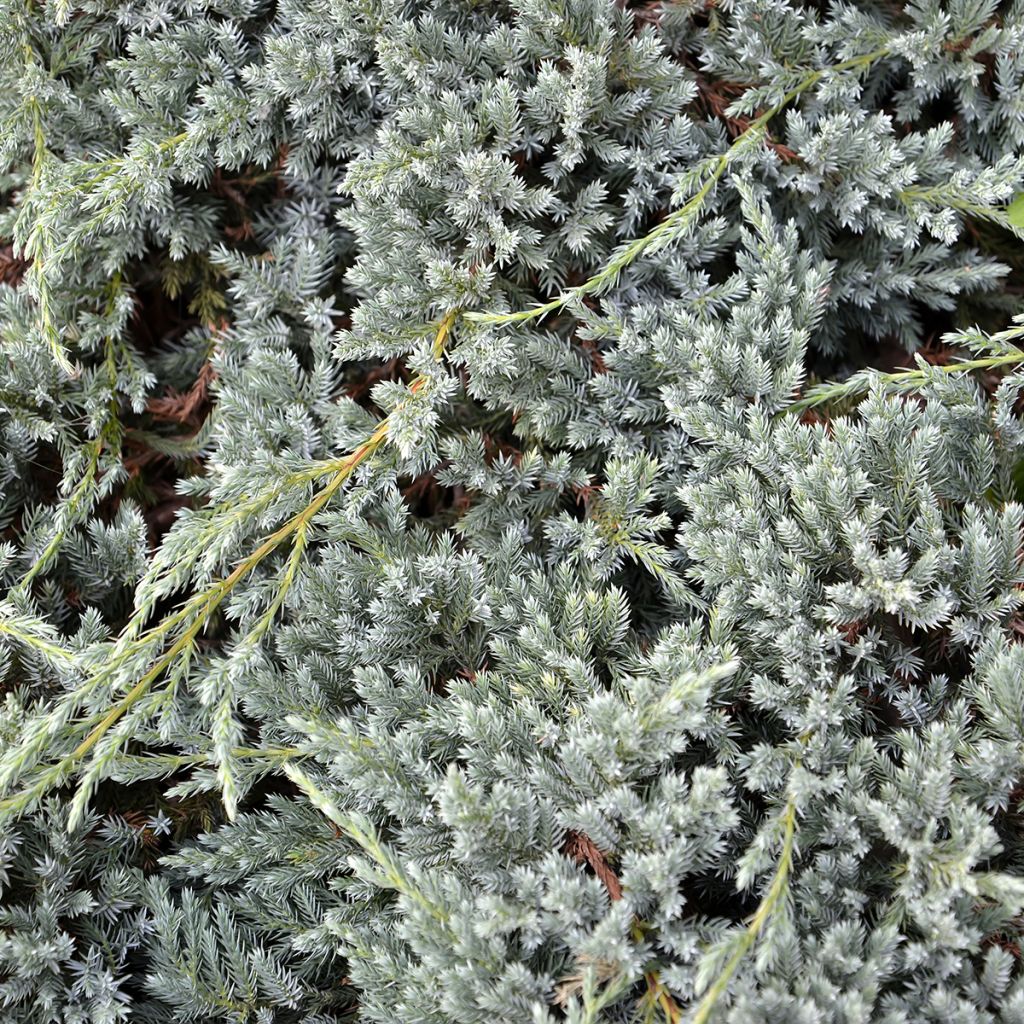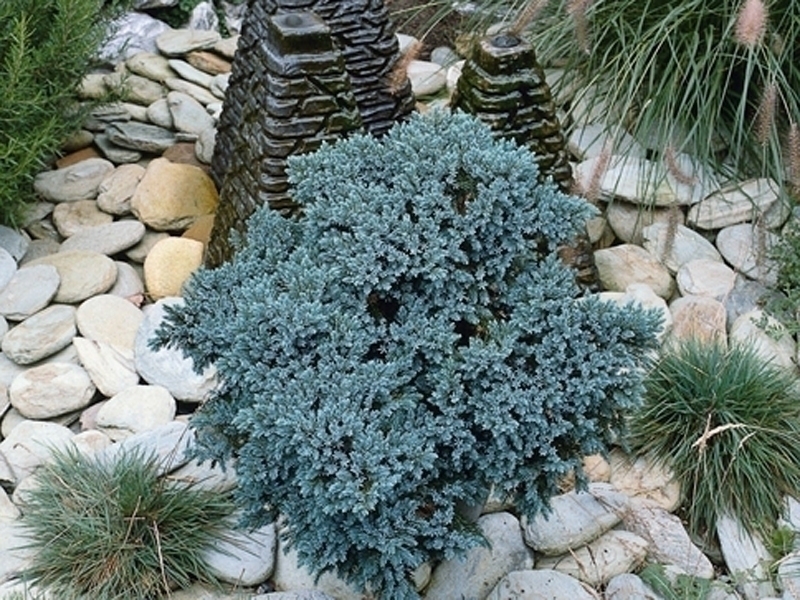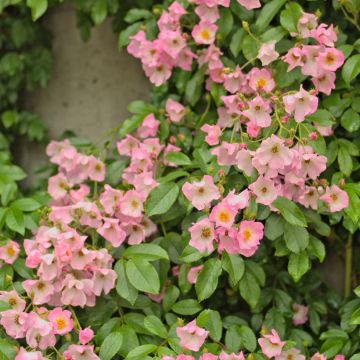

Juniperus squamata Blue Spider
Juniperus squamata Blue Spider
Juniperus squamata Blue Spider
Flaky Juniper, Himalayan Juniper
Special offer!
Receive a €20 voucher for any order over €90 (excluding delivery costs, credit notes, and plastic-free options)!
1- Add your favorite plants to your cart.
2- Once you have reached €90, confirm your order (you can even choose the delivery date!).
3- As soon as your order is shipped, you will receive an email containing your voucher code, valid for 3 months (90 days).
Your voucher is unique and can only be used once, for any order with a minimum value of €20, excluding delivery costs.
Can be combined with other current offers, non-divisible and non-refundable.
Home or relay delivery (depending on size and destination)
Schedule delivery date,
and select date in basket
This plant carries a 24 months recovery warranty
More information
We guarantee the quality of our plants for a full growing cycle, and will replace at our expense any plant that fails to recover under normal climatic and planting conditions.
Would this plant suit my garden?
Set up your Plantfit profile →
Description
The Juniperus squamata 'Blue Spider' is a Scaly Juniper with a compact, spreading habit, adorned with steel blue foliage, decorative all year round. The shoots emitted from the center of the plant are very flexible and eventually crawl on the ground like a bluish spider, which certainly inspired its name. Slow-growing, this small conifer makes a good ground cover or a lovely sunny rockery plant. Tolerant to exposure, it is highly resistant to cold and can also be planted in containers to decorate a terrace. It only fears excessively dry soils.
The Scaly Juniper, also known as Nepalese Juniper, owes its name to its old needles that it keeps at the base of the branches. It is an evergreen species native to the Himalayan mountains and China, where it grows at altitudes between 1600 and 4900 m (5249 ft 4 in and 16076 ft 1 in). It is a mountain conifer with great hardiness (down to -30°C (-22 °F)) and low demands, although it dreads excessively hot and dry climates. Like all junipers, it belongs to the Cupressaceae family, along with Thuja, Chamaecyparis, and of course Cypress (Cupressus).
The 'Blue Spider' Juniper reaches a height of 50 cm (19.7 in) and a width of 1.50 m (4 ft 11 in) at the age of 10, and up to 2 m (6 ft 7 in) wide at maturity. It has a characteristic habit, with a prostrate central vegetative mass and very flexible shoots that sprout in all directions towards the periphery. They eventually fall to the ground, allowing the shrub to gradually spread. This small conifer has a very attractive steel blue colour, particularly decorative all year round. It prefers full sun but can tolerate some shade. It is tolerant to soil type (neutral, limestone, or slightly acidic) and thrives in moderately moist, well-drained soil. While it can withstand occasional dry soil in cool climates, this conifer will be disappointing in Mediterranean climates, which are too dry and hot in summer.
This 'Blue Spider' juniper will naturally find its place in a rockery alongside other low-growing plants, colourful conifers, or compact shrubs. A golden yew 'Summergold' will create a strong colour contrast with it, as well as a Cryptomeria japonica 'Vilmorin Gold' in non-limestone soil. It can also cover small slopes and will be well-suited as a border plant for a dry stone wall, where it can crawl and hang in fringes. In a flower bed, it can be planted in the foreground, in front of a purple laurustinus, creating an original and decorative scene all year round, thanks to the purple young shoots and white flowers of the shrub. A 'Amber Jubilee' Physocarpus with changing colours and decorative wood in winter will also be a highly recommended companion.
Juniperus squamata Blue Spider in pictures


Plant habit
Foliage
Safety measures
Botanical data
Juniperus
squamata
Blue Spider
Cupressaceae
Flaky Juniper, Himalayan Juniper
Cultivar or hybrid
atteinterespiratoire
Cette plante peut entraîner des symptômes allergiques.
Evitez de la planter si vous ou vos proches souffrez de rhinite saisonnière ("rhume des foins").
Davantage d'informations sur https://plantes-risque.info
Other Juniperus - Juniper
View all →Planting and care
The Juniperus squamata 'Blue Spider' is planted from September to November in any well-drained soil, but not too dry, even poor and slightly chalky, in a preferably sunny location. If your soil is too heavy, a little trick is to plant your bush on a mound, and mulch it with gravel. Water regularly during the first two years to allow for good root development, and in case of prolonged drought. Soak the root balls well before planting. Apply organic amendment at planting and water generously in the first years.
From the second year onwards, fertilize in April, using a special conifer fertilizer (spread it on the soil before rain to aid dissolution). This very hardy conifer fears heavy soils, waterlogged in winter. It does not tolerate the long dry summers of our Mediterranean regions well.
Planting period
Intended location
Care
Planting & care advice
This item has not been reviewed yet - be the first to leave a review about it.
Similar products
Haven't found what you were looking for?
Hardiness is the lowest winter temperature a plant can endure without suffering serious damage or even dying. However, hardiness is affected by location (a sheltered area, such as a patio), protection (winter cover) and soil type (hardiness is improved by well-drained soil).

Photo Sharing Terms & Conditions
In order to encourage gardeners to interact and share their experiences, Promesse de fleurs offers various media enabling content to be uploaded onto its Site - in particular via the ‘Photo sharing’ module.
The User agrees to refrain from:
- Posting any content that is illegal, prejudicial, insulting, racist, inciteful to hatred, revisionist, contrary to public decency, that infringes on privacy or on the privacy rights of third parties, in particular the publicity rights of persons and goods, intellectual property rights, or the right to privacy.
- Submitting content on behalf of a third party;
- Impersonate the identity of a third party and/or publish any personal information about a third party;
In general, the User undertakes to refrain from any unethical behaviour.
All Content (in particular text, comments, files, images, photos, videos, creative works, etc.), which may be subject to property or intellectual property rights, image or other private rights, shall remain the property of the User, subject to the limited rights granted by the terms of the licence granted by Promesse de fleurs as stated below. Users are at liberty to publish or not to publish such Content on the Site, notably via the ‘Photo Sharing’ facility, and accept that this Content shall be made public and freely accessible, notably on the Internet.
Users further acknowledge, undertake to have ,and guarantee that they hold all necessary rights and permissions to publish such material on the Site, in particular with regard to the legislation in force pertaining to any privacy, property, intellectual property, image, or contractual rights, or rights of any other nature. By publishing such Content on the Site, Users acknowledge accepting full liability as publishers of the Content within the meaning of the law, and grant Promesse de fleurs, free of charge, an inclusive, worldwide licence for the said Content for the entire duration of its publication, including all reproduction, representation, up/downloading, displaying, performing, transmission, and storage rights.
Users also grant permission for their name to be linked to the Content and accept that this link may not always be made available.
By engaging in posting material, Users consent to their Content becoming automatically accessible on the Internet, in particular on other sites and/or blogs and/or web pages of the Promesse de fleurs site, including in particular social pages and the Promesse de fleurs catalogue.
Users may secure the removal of entrusted content free of charge by issuing a simple request via our contact form.
The flowering period indicated on our website applies to countries and regions located in USDA zone 8 (France, the United Kingdom, Ireland, the Netherlands, etc.)
It will vary according to where you live:
- In zones 9 to 10 (Italy, Spain, Greece, etc.), flowering will occur about 2 to 4 weeks earlier.
- In zones 6 to 7 (Germany, Poland, Slovenia, and lower mountainous regions), flowering will be delayed by 2 to 3 weeks.
- In zone 5 (Central Europe, Scandinavia), blooming will be delayed by 3 to 5 weeks.
In temperate climates, pruning of spring-flowering shrubs (forsythia, spireas, etc.) should be done just after flowering.
Pruning of summer-flowering shrubs (Indian Lilac, Perovskia, etc.) can be done in winter or spring.
In cold regions as well as with frost-sensitive plants, avoid pruning too early when severe frosts may still occur.
The planting period indicated on our website applies to countries and regions located in USDA zone 8 (France, United Kingdom, Ireland, Netherlands).
It will vary according to where you live:
- In Mediterranean zones (Marseille, Madrid, Milan, etc.), autumn and winter are the best planting periods.
- In continental zones (Strasbourg, Munich, Vienna, etc.), delay planting by 2 to 3 weeks in spring and bring it forward by 2 to 4 weeks in autumn.
- In mountainous regions (the Alps, Pyrenees, Carpathians, etc.), it is best to plant in late spring (May-June) or late summer (August-September).
The harvesting period indicated on our website applies to countries and regions in USDA zone 8 (France, England, Ireland, the Netherlands).
In colder areas (Scandinavia, Poland, Austria...) fruit and vegetable harvests are likely to be delayed by 3-4 weeks.
In warmer areas (Italy, Spain, Greece, etc.), harvesting will probably take place earlier, depending on weather conditions.
The sowing periods indicated on our website apply to countries and regions within USDA Zone 8 (France, UK, Ireland, Netherlands).
In colder areas (Scandinavia, Poland, Austria...), delay any outdoor sowing by 3-4 weeks, or sow under glass.
In warmer climes (Italy, Spain, Greece, etc.), bring outdoor sowing forward by a few weeks.



























































